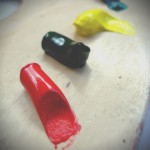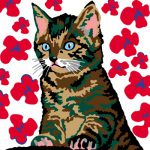Kinds Of Figures of Speech
Figures of speech are the use of a single word or a phrase in a way that is not in line with their actual literal meaning. Writers enjoy using various kinds of figures of speech in their writing so as to add interest and color to their words. Examples of figures of speech being used can be found in texts as old as the Bible, the Qur’an and the works of William Shakespeare. The language in which different kinds of figures of speech are used is commonly referred to as figurative language.
1) One of the most common kinds of figures of speech is the alliteration. Alliteration is the repetition of a consonant sound at the start of a word several times in a phrase or a sentence. An example of alliteration is, “An excellent example of an extreme alliteration is thisâ€.
2) An anaphora is the repetition of a particular word at the start of successive verses or clauses.
An example of an anaphora is, “I needed a haircut, I needed a shower, I needed a vacation.’
3) An apostrophe is one of the more popular kinds of figures of speech. They are used by writers to break off an existing discourse in order to speak about an absent thing or person, or some non-existent character or inanimate object.
4) Assonance is some kind of similarity between the sounds of internal vowels in nearby words. An example of assonance is, “strips of chicken in my mouthâ€. On the other hand, a chiasmus comes under kinds of figures of speech in which verbal patterns in the second half of a particular phrase are balanced against the first half, but with some parts reversed. An example of this is, “Friendly people get people friendsâ€.
5) Euphemisms are used in situations when one has the opportunity to use an offensive term but instead decides to substitute it for an inoffensive word or phrase. An example of a euphemism is saying, “Hitler committed ethnic cleansing†rather than, “Hitler committed genocideâ€.
6) A hyperbole is an exaggerated statement that is often implemented by writers in order to emphasize or highlight certain parts of the text. An example of hyperbole is, “I told you a million times not to lick your shoes, but you still went ahead and did it.â€
Overstatements are a kind of hyperbole that are also used to similar effect.
At the end of the day, various kinds of figures of speech should be used with extreme care. Since these literary devices convey meanings contrary to what they might suggest prima facie, it is important not to use them incorrectly and, by doing so, confuse readers. If you use the wrong kind of figure of speech in the wrong place in your text, you might say something contrary to what you mean to convey. That is why it is imperative that only those who have an excellent command over the English language risk using these tricky devices. Even still, the effective use of figurative language can enhance the quality of any text.






